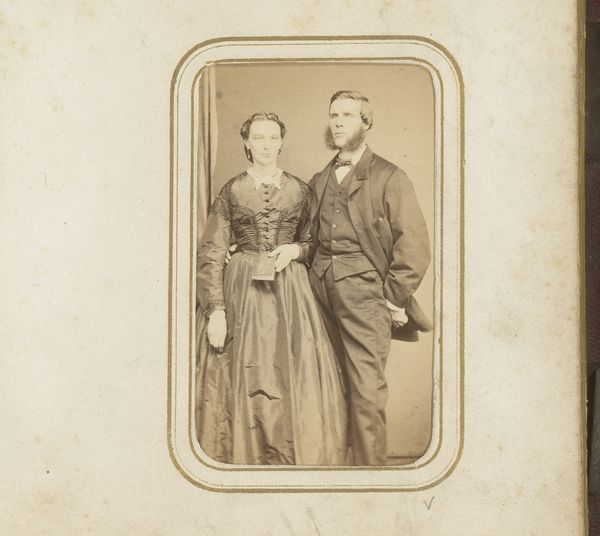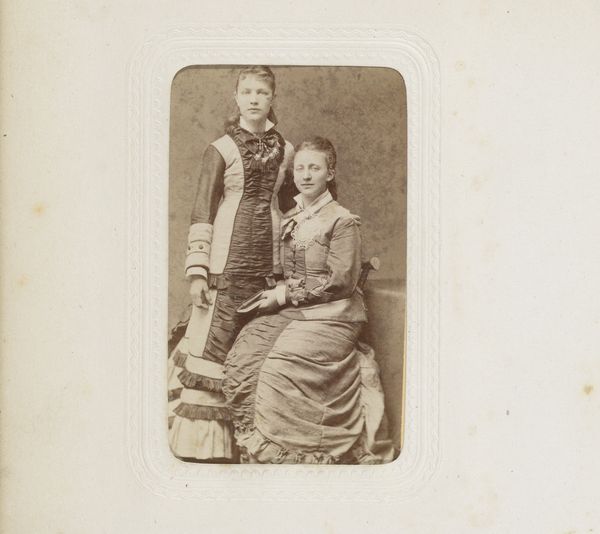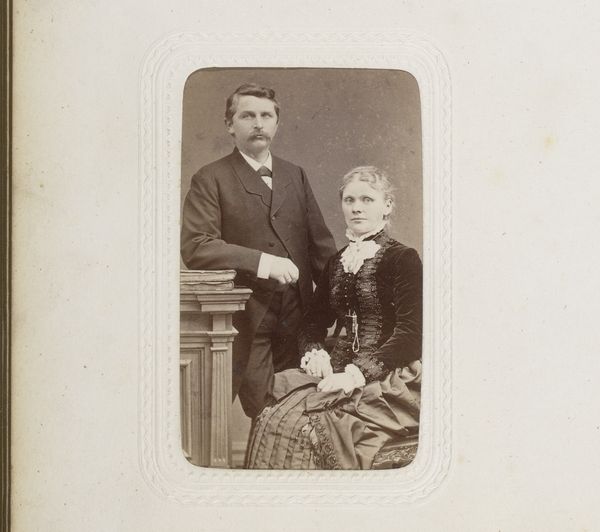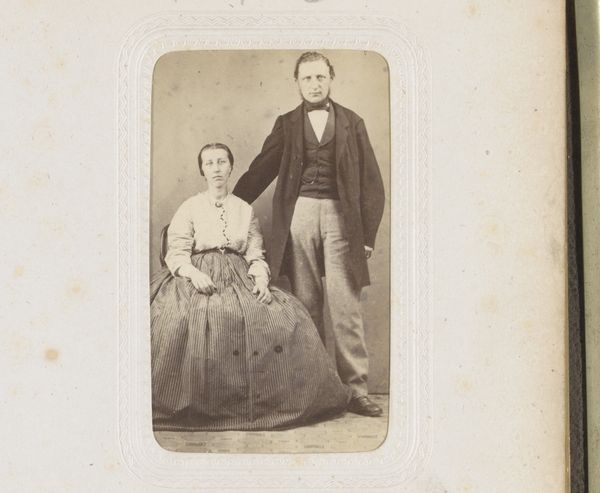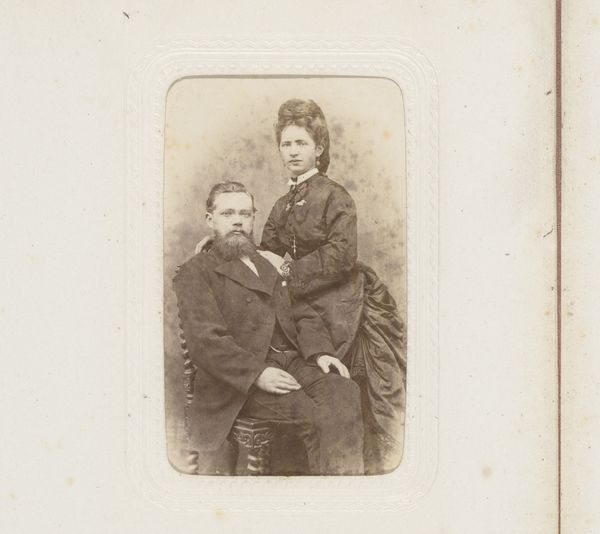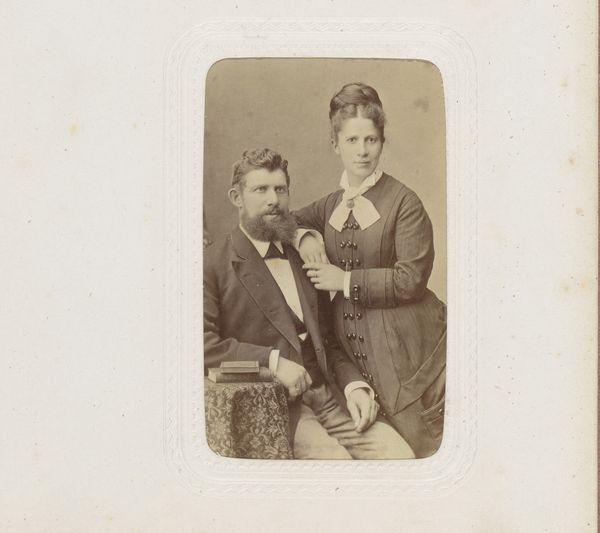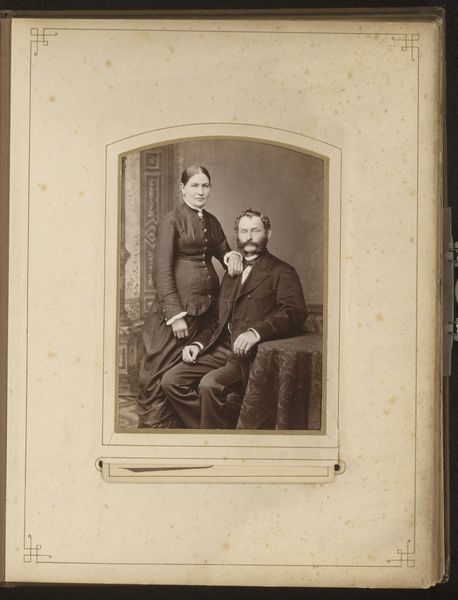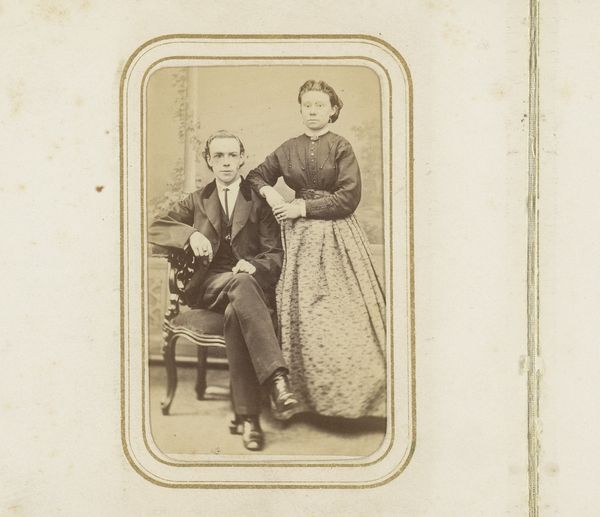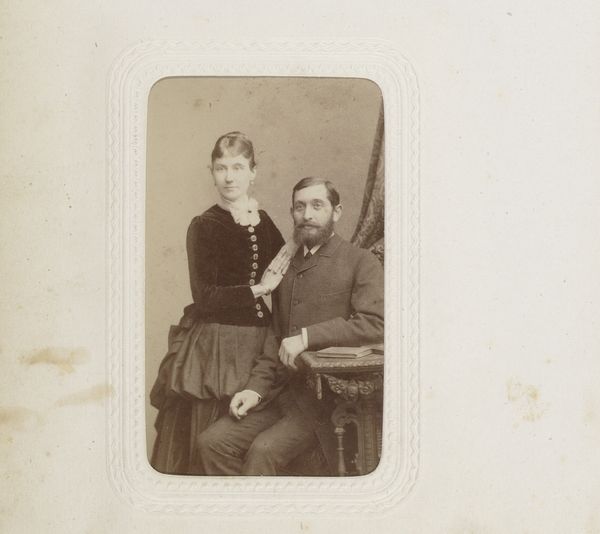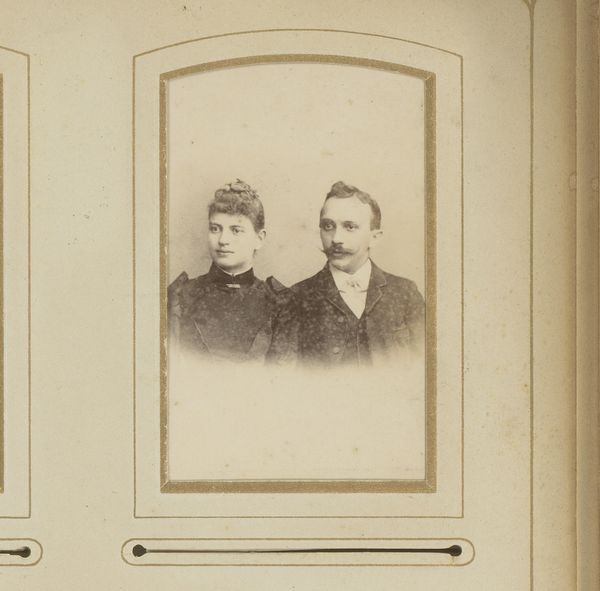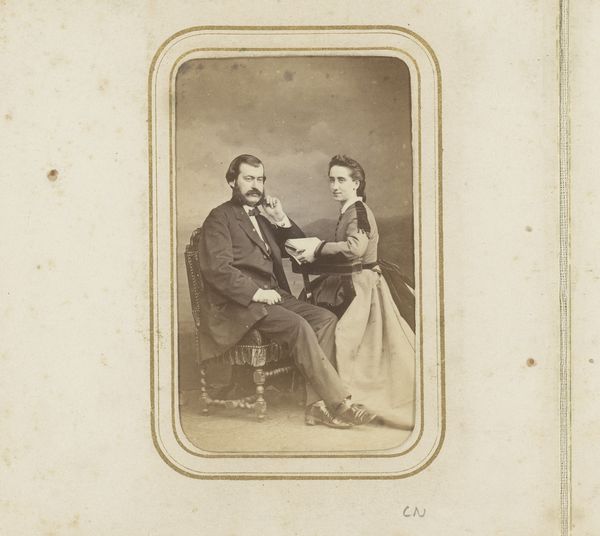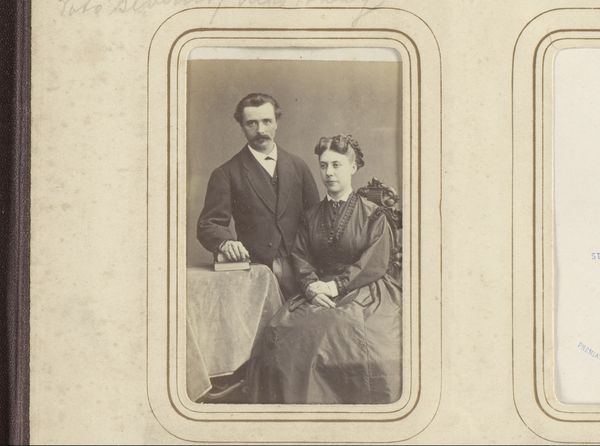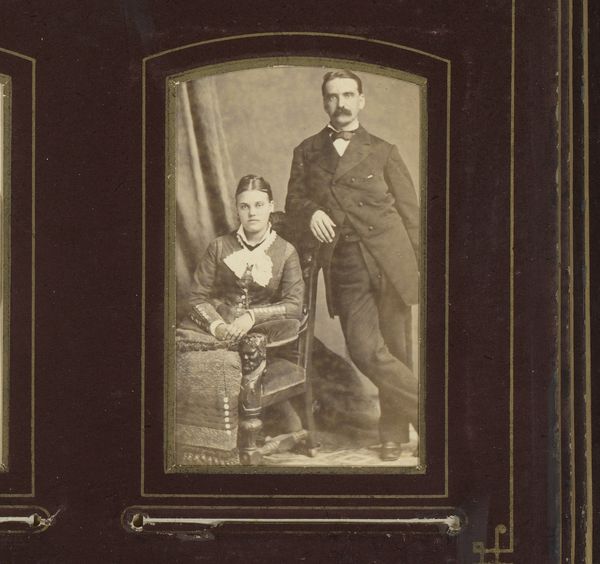
Dimensions: height 82 mm, width 49 mm
Copyright: Rijks Museum: Open Domain
Curator: Here we have an albumen print entitled "Portret van een staande vrouw en een zittende man" which translates to "Portrait of a Standing Woman and a Seated Man." The work, created by Ernst Wolffram, is dated possibly between 1882 and 1886. Editor: The sepia tones certainly lend a gravitas. The rigid pose and limited palette—it feels so intentionally constructed. It makes you wonder what codes these arrangements conveyed to its original audience. Curator: It's interesting to note the framing; it almost domesticates the figures. How does the very specific presentation affect its interpretation, framing it within a certain social context, say the burgeoning middle class and their visual assertion of identity? Editor: Notice how the light seems strategically diffused across the faces, equalizing the pair, even with their disparate levels, creating an intentional asymmetry. I am curious if the softness emphasizes a Victorian-era aesthetic. Curator: Indeed. Consider also the gaze. Neither subject makes eye contact with the viewer, adding to a sense of removed formality, a self-awareness reflective of the period's social portraiture, used as records of alliances and lineage. Editor: True, and think about the tactile quality of early photography, the textures it creates from shadows. One wonders what the material choices were of this specific albumen process of that time period in contrast to other processes. I find the contrasts both subtle and powerful. Curator: Placing this image alongside other photographic portraits of the time can show the conventions. Their clothing, hairstyles, even the simple act of placing a hand— all of it is a considered display within a precise, culturally significant practice. Editor: A worthwhile reflection on form and intent within a historical framework. This photograph encourages further study of Victorian society through visual examination.
Comments
No comments
Be the first to comment and join the conversation on the ultimate creative platform.
